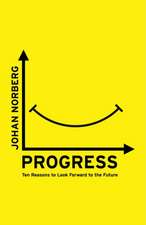The SAGE Handbook of Resistance
Editat de David Courpasson, Steven Vallasen Limba Engleză Hardback – 2 oct 2016
Occupy. Indignados. The Tea Party. The Arab Spring. Anonymous. These and other terms have become part of an emerging lexicon in recent years, signalling an important development that has gripped many parts of the world: millions of people are increasingly involved, whether directly or indirectly, in movements of resistance and protestation.
However, resistance and its conceptual "companions”, protest, contestation, opposition, disobedience and mobilization, all seem to be still mostly seen in public and private discourses as illegitimate and problematic forms of action. The time is, therefore, ripe to delve into the concerns, themes and legitimacy.
The SAGE Handbook of Resistance offers theoretical essays enabling readers to forge their own perspectives of what “is” resistance and emphasizes the empirical and experiential dimension of resistance - making strong choices in terms of how contemporary topics related to resistance help to rethink our societies as “protest societies”. The coverage is divided into six key sub-sections:
- Foundations
- Sites of Resistance
- Technologies of Resistance
- Languages of Resistance
- Geographies of Resistance
- Consequences of Resistance
Preț: 1123.84 lei
Preț vechi: 1306.79 lei
-14% Nou
Puncte Express: 1686
Preț estimativ în valută:
215.05€ • 223.08$ • 179.32£
215.05€ • 223.08$ • 179.32£
Carte disponibilă
Livrare economică 06-20 martie
Preluare comenzi: 021 569.72.76
Specificații
ISBN-13: 9781473906433
ISBN-10: 1473906431
Pagini: 530
Dimensiuni: 184 x 246 x 35 mm
Greutate: 1.11 kg
Ediția:First
Editura: SAGE Publications
Colecția Sage Publications Ltd
Locul publicării:London, United Kingdom
ISBN-10: 1473906431
Pagini: 530
Dimensiuni: 184 x 246 x 35 mm
Greutate: 1.11 kg
Ediția:First
Editura: SAGE Publications
Colecția Sage Publications Ltd
Locul publicării:London, United Kingdom
Recenzii
Resistance takes many forms, and is aimed in many directions. The editors have given us a powerful new language for grasping this diversity by cleverly dividing the handbook into foundations, sites, technologies, languages, and geographies of resistance. This book should attract wide attention and will reverberate across many disciplines.
The Editors have assembled a collection of expert articles traversing sources in time and space on what it is to ‘resist’. These argue that resistance studies is an interdisciplinary area looking, in part, at ‘the art of the weak’, ‘the weapons of the weak’, ‘style warfare’, ‘the great refusal’, ‘inaction’, and ‘rebellion’. On (or perhaps in) the other hand, there is a consideration of ‘co-optation’, ‘accommodation’ and ‘commodification’ as all equally associated with resistance. The articles move through different depths of visibility e.g. resistance is ‘underground’, ‘rhizomatic’, ‘grass roots’, ‘astroturf’ or as fully ‘out in the open’. But all are aware of the context-specific nature of resistance in a major text that will illuminate many contemporary features of a world in which power differentials appear to be increasing and where the 1% may yet come to fear a call from a resistant mob armed with pitchforks.
Resistance is the new normal. Anti-elite resistance in politics, both nationally as in Brexit and organisationally, in the role of Trump and Corbyn in their respective parties as well as in social movements globally and in the interstices of organisations that seem increasingly out of kilter with the spirit of the times is a major contemporary phenomenon. While no relations of power are ever alike that are resisted and no resistance follows universal scripts – both power and resistance are highly contextual – the Handbook of Resistance offers an invaluable resource understanding the dialectical relations of power and resistance theoretically and through many insightful empirical analyses. I recommend it as essential reading for the social sciences.
In conceiving and making available this rich interdisciplinary and globally-oriented handbook, Courpasson and Vallas are doing a great service to social scientists committed to social change. This book is an important resource that should become widely used and widely referenced.
The Editors have assembled a collection of expert articles traversing sources in time and space on what it is to ‘resist’. These argue that resistance studies is an interdisciplinary area looking, in part, at ‘the art of the weak’, ‘the weapons of the weak’, ‘style warfare’, ‘the great refusal’, ‘inaction’, and ‘rebellion’. On (or perhaps in) the other hand, there is a consideration of ‘co-optation’, ‘accommodation’ and ‘commodification’ as all equally associated with resistance. The articles move through different depths of visibility e.g. resistance is ‘underground’, ‘rhizomatic’, ‘grass roots’, ‘astroturf’ or as fully ‘out in the open’. But all are aware of the context-specific nature of resistance in a major text that will illuminate many contemporary features of a world in which power differentials appear to be increasing and where the 1% may yet come to fear a call from a resistant mob armed with pitchforks.
Resistance is the new normal. Anti-elite resistance in politics, both nationally as in Brexit and organisationally, in the role of Trump and Corbyn in their respective parties as well as in social movements globally and in the interstices of organisations that seem increasingly out of kilter with the spirit of the times is a major contemporary phenomenon. While no relations of power are ever alike that are resisted and no resistance follows universal scripts – both power and resistance are highly contextual – the Handbook of Resistance offers an invaluable resource understanding the dialectical relations of power and resistance theoretically and through many insightful empirical analyses. I recommend it as essential reading for the social sciences.
In conceiving and making available this rich interdisciplinary and globally-oriented handbook, Courpasson and Vallas are doing a great service to social scientists committed to social change. This book is an important resource that should become widely used and widely referenced.
Cuprins
Resistance Studies: A Critical Introduction - David Courpasson and Steven Vallas
PART ONE: FOUNDATIONS
Chapter 1: Globalization, Resistance, and Social Transformation - Jeffrey Juris and Marina Sitrin
Chapter 2: Emerging Subjectivity in Protest - Bob Kurik
Chapter 3: Islam: Fundamentalism and Insurgency in the Arab Spring - Valentine M. Moghadam
Chapter 4: The Grand Refusal?: Struggling with Alternative Foucauldian-Inspired Approaches to Resistance at Work - David Knights
Chapter 5: Resisting the 24/7 Work Ethic – Shifting Modes of Regulation and Refusal in Organized Employment - André Spicer and Peter Fleming
PART TWO: SITES OF RESISTANCE
Chapter 6: The Body as a Site of Resistance - Erynn Masai de Casanova & Afshan Jafar
Chapter 7: The Complexities and Contradictions of Resistance: An Intersectional Perspective - Amanda M. Gengler
Chapter 8: Individual Constraint and Group Solidarity: Marginalized Mothers and the Paradox of Family Responsibility - Jillian Crocker
Chapter 9: Protecting Our Children: Paradoxes of Resistance in an Era of Neoliberal Education - Linda Blum & Shelley Kimelberg
Chapter 10: Resistance in Organizational Strategy-Making - Anniina Rantakari and Eero Vaara
Chapter 11: Prisons as Sites of Power and Resistance - Tammi Arford
PART THREE: TECHNOLOGIES OF POWER AND RESISTANCE
Chapter 12: Recasting Community for Online Resisting Work - Felipe G. Massa
Chapter 13: Between Grassroots and ‘Astroturf’: Understanding Mobilization from the Top-down - Edward T. Walker
Chapter 14: From Digital Tools to Political Infrastructure - Marianne Maeckelbergh
Chapter 15: Resisting the New: On Cooptation and the Organisational Conditions for Entrepreneurship - Daniel Hjorth
PART FOUR: LANGUAGES OF RESISTANCE
Chapter 16: Musical Style, Youth Subcultures, and Cultural Resistance - Ryan Moore
Chapter 17: Graffitti as Infrapolitics: A Study of Visual Interventions of Resistance in San Francisco - Guillaume Marche
Chapter 18: Naming, Shaming, Changing the World - Gay Seidman
Chapter 19: Contesting Authority in a Moralized Market: The Case of a Catholic Hospital Unionization Campaign - Adam Reich
Chapter 20: Organizational Change and Resistance: An Identity Perspective - Sierk Ybema, Robyn Thomas & Cynthia Hardy
PART FIVE: GEOGRAPHIES OF RESISTANCE
Chapter 21: The World Social Forum and Global Resistance: The Trajectory of an Activist Open Space - Giuseppe Caruso
Chapter 22: Back to Work: Resisting Clientelism in a Poor Neighborhood of Buenos Aires - Pablo Fernandez
Chapter 23: Bases of Governance and Forms of Resistance: The Case of Rural China - Xueguang Zhou & Yun Ai
Chapter 24: Resistance and its Pitfalls: Analyzing NGO and Civil Society Politics in Bangladesh - Lamia Karim
Chapter 25: Urban Gardening: Between Green Resistance and Ideological Instrument - Sandrine Baudry & Emeline Eudes
PART ONE: FOUNDATIONS
Chapter 1: Globalization, Resistance, and Social Transformation - Jeffrey Juris and Marina Sitrin
Chapter 2: Emerging Subjectivity in Protest - Bob Kurik
Chapter 3: Islam: Fundamentalism and Insurgency in the Arab Spring - Valentine M. Moghadam
Chapter 4: The Grand Refusal?: Struggling with Alternative Foucauldian-Inspired Approaches to Resistance at Work - David Knights
Chapter 5: Resisting the 24/7 Work Ethic – Shifting Modes of Regulation and Refusal in Organized Employment - André Spicer and Peter Fleming
PART TWO: SITES OF RESISTANCE
Chapter 6: The Body as a Site of Resistance - Erynn Masai de Casanova & Afshan Jafar
Chapter 7: The Complexities and Contradictions of Resistance: An Intersectional Perspective - Amanda M. Gengler
Chapter 8: Individual Constraint and Group Solidarity: Marginalized Mothers and the Paradox of Family Responsibility - Jillian Crocker
Chapter 9: Protecting Our Children: Paradoxes of Resistance in an Era of Neoliberal Education - Linda Blum & Shelley Kimelberg
Chapter 10: Resistance in Organizational Strategy-Making - Anniina Rantakari and Eero Vaara
Chapter 11: Prisons as Sites of Power and Resistance - Tammi Arford
PART THREE: TECHNOLOGIES OF POWER AND RESISTANCE
Chapter 12: Recasting Community for Online Resisting Work - Felipe G. Massa
Chapter 13: Between Grassroots and ‘Astroturf’: Understanding Mobilization from the Top-down - Edward T. Walker
Chapter 14: From Digital Tools to Political Infrastructure - Marianne Maeckelbergh
Chapter 15: Resisting the New: On Cooptation and the Organisational Conditions for Entrepreneurship - Daniel Hjorth
PART FOUR: LANGUAGES OF RESISTANCE
Chapter 16: Musical Style, Youth Subcultures, and Cultural Resistance - Ryan Moore
Chapter 17: Graffitti as Infrapolitics: A Study of Visual Interventions of Resistance in San Francisco - Guillaume Marche
Chapter 18: Naming, Shaming, Changing the World - Gay Seidman
Chapter 19: Contesting Authority in a Moralized Market: The Case of a Catholic Hospital Unionization Campaign - Adam Reich
Chapter 20: Organizational Change and Resistance: An Identity Perspective - Sierk Ybema, Robyn Thomas & Cynthia Hardy
PART FIVE: GEOGRAPHIES OF RESISTANCE
Chapter 21: The World Social Forum and Global Resistance: The Trajectory of an Activist Open Space - Giuseppe Caruso
Chapter 22: Back to Work: Resisting Clientelism in a Poor Neighborhood of Buenos Aires - Pablo Fernandez
Chapter 23: Bases of Governance and Forms of Resistance: The Case of Rural China - Xueguang Zhou & Yun Ai
Chapter 24: Resistance and its Pitfalls: Analyzing NGO and Civil Society Politics in Bangladesh - Lamia Karim
Chapter 25: Urban Gardening: Between Green Resistance and Ideological Instrument - Sandrine Baudry & Emeline Eudes
Descriere
A global and multidisciplinary exploration of contemporary resistance. Leading researchers from around the world link theory to the realities of Occupy, Indignados, The Tea Party, The Arab Spring, Anonymous and more.














